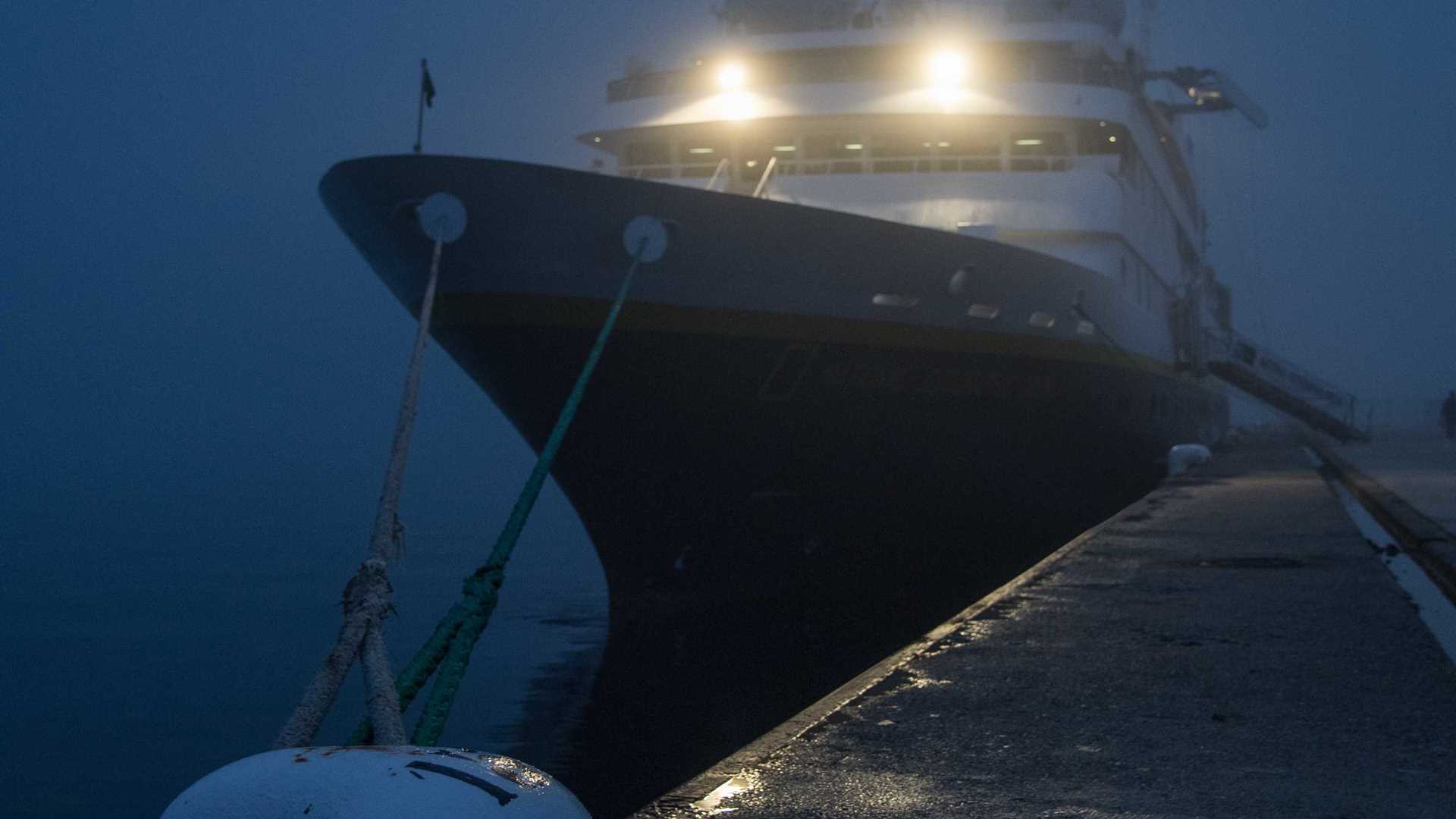A foggy, foggy dew hung over Vilagarcia de Arousa as we docked early this morning, spreading an otherworldly bewitchment entirely in keeping with the well-cultivated self-image of Galicia as an ethereal, mysterious corner of the Iberian peninsula, a land of superstition, of witches and bag-pipes. As our on-board ethno-musicologist was to explain in his recap before dinner, bagpipes are near universal among pastoral peoples and by no means the preserve of only Celtic countries. Galician, the local language, is very closely related to Portuguese, a Romantic language (derived from Latin) quite unrelated to the Celtic languages of Western Europe spoken today in Scotland, Ireland, Wales, and Brittany.
An Atlantic-facing country, with a rugged coastline rising to a high plateau, Galicia has high rainfall; in that respect, at least, resembling the Celtic lands to the north for the same geomorphological reasons. Galicia is a green country with mild temperatures and plentiful agricultural produce. What the area is probably most famous for, however, is its seafood, most notably mussels and scallops. The coastline is indented with rias, sunken valleys where the land has subsided allowing the ingress of sea water. This provides numerous good sheltered harbours but also ideal conditions for mussels and clams which are now commercially farmed. One of our excursions witnessed this marine production in a glass-bottomed boat before a delicious tasting session.
The scallop shell is emblematic here as a symbol of the pilgrimage to Santiago de Compostella, the third most important pilgrimage site in Christendom after Jerusalem and Rome. St James the Apostle was reputed to have come on mission to Spain and after dying back home in Jerusalem his body was returned to the mission field. His relics are the object of pilgrimage in the great cathedral that bears his name high inland in Galicia. A vision of St James inspired the Reconquista, the mediaeval movement that culminated in the expulsion of the Moors and Jews from Spain in 1492 under the Catholic monarchs, King Ferdinand and Queen Isabella. A popular image of St James shows the saint himself on a white charger slaying a Moor, a thoroughly anachronistic and hardly politically correct image today. This is Santiago Matamoros, St James the Slayer of the Moors. Those of us who attended the mid-day pilgrim’s mass in the cathedral, in the presence of the Bishop, were privileged to watch the famous botafumeiro swing the length of the transept dispensing incense ver the pilgrims as it has done for centuries past. Some of us did a short section of the pilgrim route, the Camino, before returning to the ship, staffs in hand and with scallop shell badges to commemorate our exertions.









